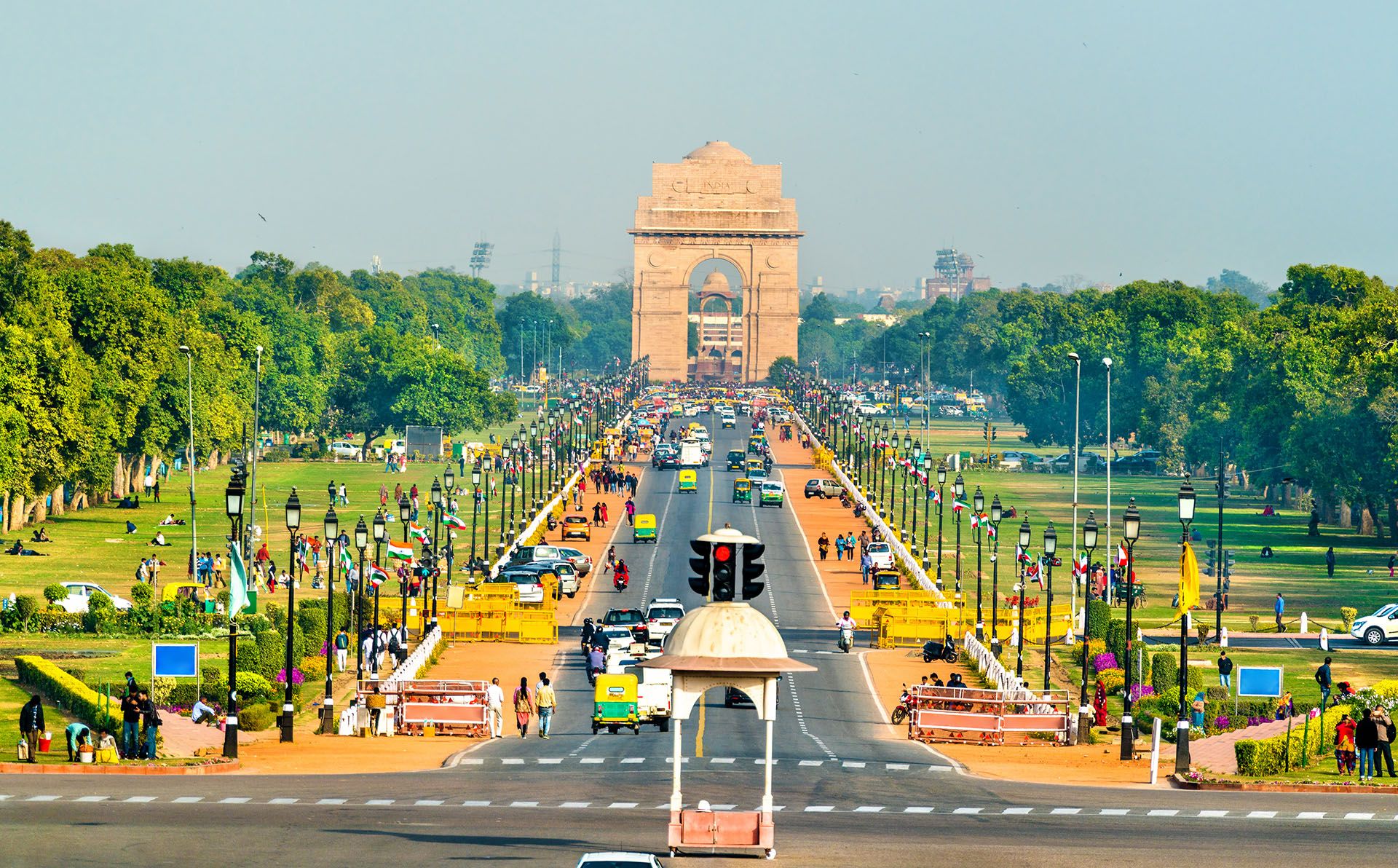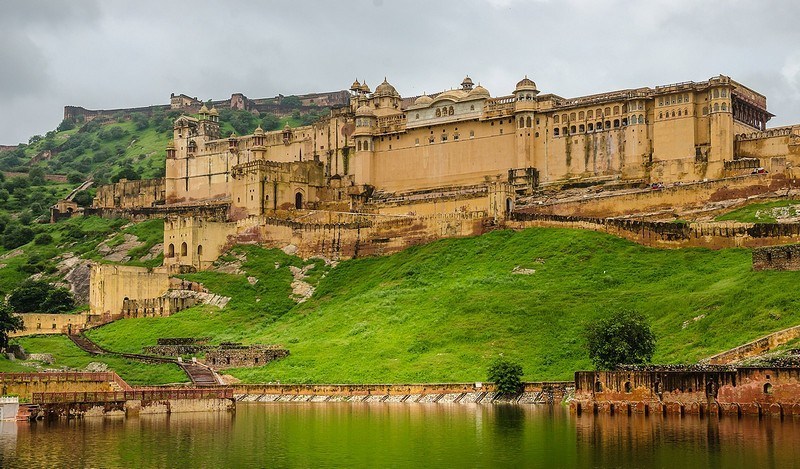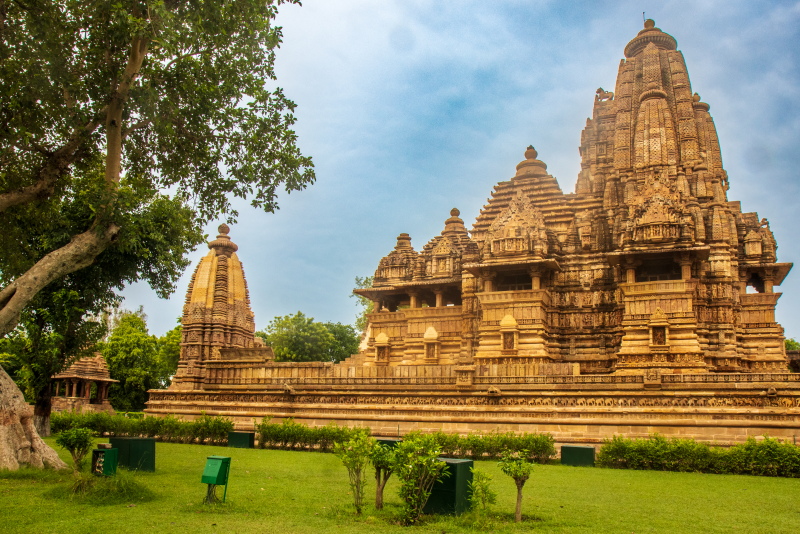
Cost Based On Two Persons Traveling Together ( Foreign National)
Standard Package:
USD 1950 – PP On-wards
Luxury Package:
USD 2350 -PP On-wards
Embark on this unforgettable journey, where every stop immerses you in India’s legacy, ancient traditions, and vibrant cultural landscapes.
Discover the Rich Heritage and Culture of India: A Journey Through Time
Uncover India’s extraordinary heritage and vibrant culture on a journey to its most iconic cities and monuments:
Important Note: “This is a private tour with a fully customizable itinerary. Contact us for a tailored quote designed to meet your unique preferences and interests.”
Detailed Itinerary
Day 1: Arrive at Delhi
On your arrival at Delhi International airport this late evening. After clearing Customs and Immigration, as you arrive in the arrival lounge “Especial Vacations” representative will be waiting to receive you, holing your name / group placard and you will be escorted to the hotel for an overnight stay.
Day 2: Delhi -Full Day Delhi Sightseeing
Explore the fascinating duality of India’s capital, home to the remnants of seven ancient cities that narrate tales of empires, conquests, and dynasties. Wander through historical marvels and bustling markets, where the old and new exist in perfect harmony.
Today after breakfast, you will head on for full day guided sightseeing of Old and New Delhi. Starting sightseeing from Old Delhi, build by the fifth Mughal  Emperor Shanjehan known as Shahjehanabad during Mughal rule. Visit the largest Mosque of Asia Jama Masjid and there upon enjoy rickshaw ride through the narrow lanes of Shahjehanabad , will give you an glimpse of the bygone era, followed by visit to and Red fort build by the same emperor. Later visit the Raj Ghat, the cremation ground of Mahatma Gandhi. Followed by lunch break at city restaurant. After Lunch, visit Humayun’s Tomb- also called predecessor of Taj Mahal, followed by drive through the Luyten Delhi, where you will have glimpse of British era, with short stop at India gate, memorial built in the memory of Soldiers who died in First World War. Lastly visit Qutab Minar, the tallest and famous towers in the world, also famous for its architecture, history, design.
Emperor Shanjehan known as Shahjehanabad during Mughal rule. Visit the largest Mosque of Asia Jama Masjid and there upon enjoy rickshaw ride through the narrow lanes of Shahjehanabad , will give you an glimpse of the bygone era, followed by visit to and Red fort build by the same emperor. Later visit the Raj Ghat, the cremation ground of Mahatma Gandhi. Followed by lunch break at city restaurant. After Lunch, visit Humayun’s Tomb- also called predecessor of Taj Mahal, followed by drive through the Luyten Delhi, where you will have glimpse of British era, with short stop at India gate, memorial built in the memory of Soldiers who died in First World War. Lastly visit Qutab Minar, the tallest and famous towers in the world, also famous for its architecture, history, design.
Overnight: At Hotel (Meals: Breakfast)
Day 3: Delhi – Jaipur – The Pink City
Discover the world’s first planned city, designed according to the ancient principles of Shilpa Shastra by the Hindu scholar Vidyadhar Bhattacharya. Known as the Pink City, Jaipur’s palaces, forts, and vibrant bazaars captivate with their architectural beauty and cultural richness.
After breakfast, you will be chauffeured to Jaipur (265Km / 5Hrs), upon arrival, check in to your hotel.
Jaipur the pink city and its pink color associated with hospitality in Rajasthan, spreading out pink carpet for its visitors. Planned by young architect, Vidyadhar 
Rest of the day is at leisure to explore the city at your own pace.
Overnight: At Hotel (Meals: Breakfast)
Day 4: Jaipur – The Pink City
Today have early breakfast around 7 AM and head on for an excursion to Amber, the former capital has a beautiful complex of palaces, halls, gardens and temples built by Raja Man Singh, Mirza Raja Jai Singh and Sawai Jai Singh over a period of about two centuries. It emerges from the placid waters of Mootha Lake and is approachable only through steep path. Enjoy short Elephant ride to reach the fort  located on the hill.
located on the hill.
After lunch at city restaurant, continue with Jaipur city tour visit the City Palace, Jantar Mantar and Hawa Mahal. The city palace houses museum with superb collection of Rajasthani costumes and armory of Mughals and Rajputs including swords of different shapes and sizes with chased handles, some of them inlaid with enamel and embellished with Jewels and encased in magnificent Scabbards. The art gallery has excellent collection of miniature paintings, carpets and rare artifacts.
Overnight: At Hotel (Meals: Breakfast)
Day 5: Jaipur – Ranthambore National Park
Today early morning, you will be transferred to Nizamuddin Railway station with packed breakfast to board the morning train to Sawai Madhopur. Met on arrival and transferred to your jungle lodge.
To hear the tiger roar, we take you to Ranthambhor National Park, Sawai Madhopur is the gateway to this tiger territory just 12 km away on the Delhi  Mumbai railway line. The 392 sq. km Tiger reserve comprises of dry deciduous forest sprawling over an undulating terrain of Aravalli and Vindhyan ranges. The park is one of the finest tiger reserves in the country under the Project Tiger. The majestic predators assured of protection, roam freely during the day time and can be seen at close quarters. Ranthambore Sanctuary has a large number of sambhar, cheetal, nilgai, chinkara, langur, wild boar and peafowl.
Mumbai railway line. The 392 sq. km Tiger reserve comprises of dry deciduous forest sprawling over an undulating terrain of Aravalli and Vindhyan ranges. The park is one of the finest tiger reserves in the country under the Project Tiger. The majestic predators assured of protection, roam freely during the day time and can be seen at close quarters. Ranthambore Sanctuary has a large number of sambhar, cheetal, nilgai, chinkara, langur, wild boar and peafowl.
On arrival you will met and transferred to your hotel.
After lunch, proceed for afternoon Jeep safari in the Ranthambore National Park.
Overnight at Jungle resort (Meals: Breakfast, Lunch &Dinner)
Day 6:Ranthambore National Park
Enjoy morning and late afternoon jeep safari in the Ranthambore National Park.  Experience the thrill and excitement of seeing the tigers roaming freely, playing, hunting or relaxing in the wild along with other wildlife in the forest.
Experience the thrill and excitement of seeing the tigers roaming freely, playing, hunting or relaxing in the wild along with other wildlife in the forest.
Overnight at Jungle resort (Meals: Breakfast, Lunch & Dinner)
Day 7: Ranthambhore- Agra-Taj City
Stand in awe before the Taj Mahal, an epitome of love and considered one of the world’s most beautiful monuments. This “Crown of Palaces” is a UNESCO World Heritage Site and draws millions who come to witness its unparalleled elegance.
After breakfast, you will be chauffeured to Agra (240Km/6hrs), en route visit Fatehpur Sikri the first planned city of the Mughals, built by Akbar, the grandson of Babar. The sloping levels of the city were connected into terraces which were utilized for various complexes such as Jami masjid, Buland-Darwazah and tomb of Sheikh Salim Chishti; Khass Mahal, Shahi-Bazar, Mina-Bazar, the Panch-Mahal, Khwabgah, Diwan-i-Khass, Anup-Talao, Chaupar and Diwan-i-Am. The efficient system of drainage and water-supply adopted here suggest an extremely intelligent town-planning.
Rest of the day is at leisure, free to explore or shopping.
Overnight: At Hotel (Meals: Breakfast)
Day 8: Agra– Full Day City Tour
After breakfast, head on for sightseeing of Agra, visit to Agra Fort, Taj Mahal and Sikandra
Agra fort built by Akbar, the great Mughal Emperor in 1565 A.D. later additions Jahangir his son and Shah Jahan his grandson Shah Jahan.. The fort is crescent  shaped, flattened on the east with a long, nearly straight wall facing the river. It has a total perimeter of 2.4 km and is ringed by double castellated ramparts of red sandstone punctuated at regular intervals by bastions. A 9mt. wide and 10mt. deep moat surround the outer wall. There are number of exquisite building like Moti Masjid-a white marvel mosque akin to a perfect pearl, Diwan-e-Am, Diwan-e-Khaas, Jehangir’s Palace, Khaas Mahal, Shish Mahal and Musamman or Samman Burj-where Shahjahan was held captive in 1666 A.D.
shaped, flattened on the east with a long, nearly straight wall facing the river. It has a total perimeter of 2.4 km and is ringed by double castellated ramparts of red sandstone punctuated at regular intervals by bastions. A 9mt. wide and 10mt. deep moat surround the outer wall. There are number of exquisite building like Moti Masjid-a white marvel mosque akin to a perfect pearl, Diwan-e-Am, Diwan-e-Khaas, Jehangir’s Palace, Khaas Mahal, Shish Mahal and Musamman or Samman Burj-where Shahjahan was held captive in 1666 A.D.
Taj Mahal, completed in 1653 A.D. built by the Mughal Emperor Shah Jahan as the final resting place for his Queen, Mumtaz. It is India’s most fascinating and beautiful monument, perfectly symmetrical monuments took 22 years (1630-1652) and 20,000 workers, Masons and Jewelers to build. Set amidst landscaped gardens Taj Mahal on the bank of the Yamuna River. It can be observed like a Mirage from the Agra Fort from where Emperor Shah Jahan stared at it, for the last eight years his life as a prisoner of his son Aurangzeb.
Sikandra- the mausoleum of emperor Akbar represent his philosophy and secular outlook, combining the best of Hindu and Muslim architectures in a superlative region. Completed in 1613 A.D. by his son Jahangir, it is one of the well preserved monuments. Itmad-ud-Daulah is the tomb of Mirza Ghyas Beg, a persian who had obtained service in Akbar Court. The Marvel tomb was built by Emperor Jehangir’s Queen, Noorjahan, for her father Mirza Ghyas Beg during 1622-1628 A.D
Overnight: At Hotel (Meals: Breakfast)
Day 9: Agra- Orchha – Khajurao
Have early breakfast, you will be transferred to Agra Cant Railway station to Bhopal Shatabdi for Jhansi, departing Agra at 0820hrs. Upon arrival at 1100 hrs. You be received by Especial representative and chauffeured to Khajuraho (170 km), en route visit Orchha.
Visit the legendary Khajuraho Temples, renowned for their intricate sculptures and exquisite architecture. Designated a UNESCO World Heritage Site, these temples are one of India’s “seven wonders” and offer a window into India’s artistic and spiritual heritage.
In 16th Century Orchha was founded by the Bundela Rajput King, Rudra Pratap.  Among the succeeding rulers, the most notable was Raja Bir Singh Ju Deo. He built the exquisite Jehangir Mahal, a tiered palace capped by graceful chhatris. The view of spiraling temple spires and cenotaphs is outstanding. The Laxminarayan Temple and Raj Mahal, exciting murals encompassing a variety of religious and secular themes, bring the walls and ceilings to rich life.
Among the succeeding rulers, the most notable was Raja Bir Singh Ju Deo. He built the exquisite Jehangir Mahal, a tiered palace capped by graceful chhatris. The view of spiraling temple spires and cenotaphs is outstanding. The Laxminarayan Temple and Raj Mahal, exciting murals encompassing a variety of religious and secular themes, bring the walls and ceilings to rich life.
Khajuraho: One thousand years ago, under the generous and artistic patronage of the Chandela Rajput kings, 85 temples, in amazing form and richly carved, were built and completed in span of 100 years, near the village of Khajuraho, from 950 AD – 1050 AD. Today, only 22 temples have survived the destruction by Muslim invaders; these remain as a collective paean to life, to joy and to creativity; to the ultimate fusion of man with his creator.
Overnight: At Hotel (Meals: Breakfast)
Day 10: Khajuraho – Varanasi
Feel the spirit of India in its holiest city, described by Mark Twain as “older than history, older than tradition, older even than legend, and looks twice as old as all of them put together.” Experience ancient rituals on the banks of the sacred Ganges, where spirituality and history blend seamlessly.
After breakfast visit the temples of Khajuraho which are divided into three geographical groups: Western, Eastern and Southern.
The Western group is the best and the largest temple complex. The Kandariya Mahadev temple soars 31 km high. The Chaunsat Yogini, is the only granite temple dedicated to Kali, quadrangular in plan. Only 35 of the original 65 cells remain and no image of Kali has survived: Another Kali Temple (originally dedicated to Vishnu) is the Devi Jagadambe Temple. The Chitragupta temple, dedicated to the sun-god, Surya. The image of this powerful deity in the inner sanctum is particularly imposing: 5ft high, and driving a seven-horsed chariot. The group scenes depicted is equally spectacular: royal processions, elephant- fights, hunting scenes, group dances. The lavish lifestyle of the Chandela kings and their court is here in all its pomp and glory. The Eastern Group main consists of Hindu and Jain temples make up the Eastern Group, which lies close to the Khajuraho village. The largest Jain temple, Parswanath, is in this group. Exquisite in detail, the sculptures on the northern outer wall make this temple perhaps the finest in the group. The Southern Group has fine Chaturbhuj Temple has a massive intricately carved image of Vishnu in the sanctum. Duladeo Temple, another of the southern group, is a little away from the road to the Jain group of temples.
After sightseeing, you will be transferred to airport to board flight to Varanasi: one of the oldest living cities in the world. Many names have been given to Varanasi, though its recently revived official appellation is mentioned in the Mahabharata and in the Jataka tales of Buddhism. The great river banks of Varanasi, built high with eighteenth and nineteenth-century pavilions and palaces, temples and terraces, are lined with an endless chain of stone steps – the ghats – progressing along the whole of the waterfront, altering in appearance with the dramatic seasonal fluctuations of the river level.
On arrival, you will be received by our representative and escorted to your hotel for overnight stay.
Overnight: At Hotel (Meals: Breakfast)
Day 11: Varanasi
Today get up early in the morning , proceed on for boat ride on river Ganges, to witness the daily rituals along the Ghats (steps) that line the river, you will see locals practicing yoga and Hindus performing morning prayers, before bathing in the river to wash away their sins. After boat ride and short walk along the Ghat. We return to hotel.
After breakfast, head on for sightseeing of Varanasi Visit the Benaras Hindu University founded in 1916 and its famous Museum Bharat Kala Bhavan which houses one of the finest collections of Mughal miniature paintings and brocade textiles. Also visit the Bharat Mata Temple, with its unique sculptured map of India, known as the Mother India Temple.
Followed by excursion to Sarnath – The place where the Buddha set the ‘Wheel of Law’ in motion by delivering his first sermon at the deer park. See the Chowkandi and Dhamek Stupas, the ruins of 9th and 10th century monasteries and temples as well as the Tibetan Temple. The temple built by the Mahabodhi Society in 1931. Also visit the famous Sarnath Museum (Closed on Fridays].
Overnight: At Hotel (Meals: Breakfast)
Day 12: Varanasi- Delhi
Enjoy a leisurely breakfast, later in the afternoon; you will be transferred to airport to board flight for Delhi. Upon arrival, around 1800 hrs, you can choose for an additional night in Delhi / connect to your International flight back home.
Time to say good bye to all new friends you have made and take back warm memories of your trip.
Meals: Breakfast
End of Safari
"Receive a Free, Personalized Quote Today!"
Inclusions
- All transfer & Sightseeing by Private air-conditioned car
- Meals as specified in the itinerary
- Jeep Safaris as specified in the itinirary
- Services of Experienced Guide / Naturalist.
- All Entrance Fee to Munuments and National Park
- Applicable government taxes
Exclusions
- Extras at the lodges i.e. beverages and drinks, telephone, laundry etc. Tipping
- Any other item not included in the Inclusions
Important Notes
- Park fees may change without prior notice. This is beyond our control and any increase levied will be passed onto you.
- There are limited safari vehicles allowed to enter in the national parks and are most difficult to book at a short notice. Please book your tour much in advance
- The published price is not applicable during the Christmas and New Year period.
- Check-in and check-out time at all hotels is 12 noon unless otherwise specified
